Common Questions About Agriculture
Accurate, well-sourced information
Helpful information is just a click away! We've made it easy to access accurate and well researched answers to some of the most common questions about agriculture.
If we take into consideration the entire lifetime feed intake of cattle, only 7% of their diet is made up of grain. The other 93% of the animal’s lifetime diet will consist largely of feed that is inedible to humans. For every 0.6 pounds of human edible protein cattle consume, there is a return of 1 pound of human edible protein in the form of beef. And 86% of what livestock eat globally is not in competition with human food. Cattle are ruminant animals, meaning they have a four-chambered stomach. This unique stomach system is found in other farm animals like sheep and goats. These animals have the ability to graze pastures and eat forages that humans and other animals with non-ruminant stomachs cannot digest due to the fiber content. Cattle diets also consist of feed that has been converted from grain milling and processing waste. Cattle are able to convert this into a high-quality protein for their diets.
A young horse is known as a foal. Horses come in many different breeds, including those classified as ponies. Ponies are small breeds of horses that, because of their size, appear much smaller when fully grown than larger breeds of horses. A horse’s height is measured in hands from the ground to the withers (the area on top of a horse between its neck and back). A hand represents 4 inches. The term horse is generally applied to one that is 14.2 hands (4 feet, 9 inches) or taller. A mature horse shorter than 14 hands is considered a pony by the industry.
Animal agriculture plays an important role in feeding the growing population. Although it may appear that land used for livestock and livestock feed should be used for human food consumption, much of this land is not suitable for growing human food crops. 86% of what livestock eat globally is not in competition with human food. Many acres used for livestock grazing are made up of forages that can only be eaten by ruminant animals, like cattle, and converted to products for humans to eat. Additionally, animal agriculture provides the components humans need for a well-balanced, healthy diet and contribute a number of by-products including leather, ointments and creams for burns, insulin, paint brushes and sports equipment to name a few.
No. All cows produce white milk. There are a number of breeds of dairy cattle — Holstein, Jersey, Brown Swiss, Ayrshire, Guernsey and Milking Shorthorn to name a few — none of which produce chocolate milk. Chocolate milk is man-made. Chocolate, from the tropical cacao tree, is mixed along with sugar into the white milk cows produce to create chocolate milk.
When properly managed, grazing animals can help the environment. “America’s farmers and ranchers are considered everyday environmentalists,” shares the Cattlemen’s Beef Board. Ranchers work with the environment by practicing rotational grazing, using innovative technologies to produce more product with fewer natural resources and partnering with environmental agencies to monitor and improve the environment. Allan Savory of the Savory Institute shares that, “Instead of fearing overgrazing and taking livestock off land to rest it, most grazing lands should have more livestock added because their movement and their waste and their relentless chomping stimulate grasses to grow.” “When grasslands restore themselves,” he adds, “they sequester carbon; so, increasing the density of cattle and other grazing animals not only restores the environment, it protects against climate change.”
In the 1960s, information from the USDA was misinterpreted, leading people to believe it took 16 pounds of grain to produce 1 pound of beef. In reality, it takes 2.5 pounds of grain to produce 1 pound of beef we eat in the United States. For the first six to eight months of a calf ’s life it is primarily consuming mother’s milk with a nibble of grass and hay to stimulate their rumen development. An average calf is 600 pounds before it begins to eat grain. 50-70% of a beef animal’s feedlot diet is forages and feed that humans can’t eat. These factors all contribute to the fact that it takes on average a mere 2.5 pounds of grain to produce 1 pound of delicious beef!
Some cuts of beef can be as lean as a 3-oz. skinless chicken thigh. A 3-oz. serving of beef provides 10 essential nutrients including vitamins B6 and B12 and about half the daily requirement of protein. The National Institute of Health states that B6 is related to metabolism and immune function as well as brain development during pregnancy. B12 helps blood cell and DNA development. Interestingly, no plants have naturally occurring B12.
Animal welfare refers to the conditions in which an animal is raised. Animal welfare is important to ranchers because animals that are properly cared for will be healthier and more productive. According to the Animal Agriculture Alliance, “Producers take their ethical obligation to providing the best quality care to their animals very seriously.” This Alliance has defined a list of Animal Care Principles for producers that includes “access to food and water, health and veterinary care, appropriate environmental and living conditions, implementing science- based husbandry practices, using proper handling practices and providing comfortable and sanitary transportation to avoid stress."
The Food and Drug Administration has approved antibiotics of responsible use in food animals to treat disease in animals that are sick, control disease for a group of animals when some of the animals are sick and to prevent disease in animals that are at risk for becoming sick. Ranchers give antibiotics according to the instructions on the label and under the direction of a veterinarian. They don’t like to use antibiotics unless it is absolutely necessary, because antibiotics are expensive, and they take time to administer.









